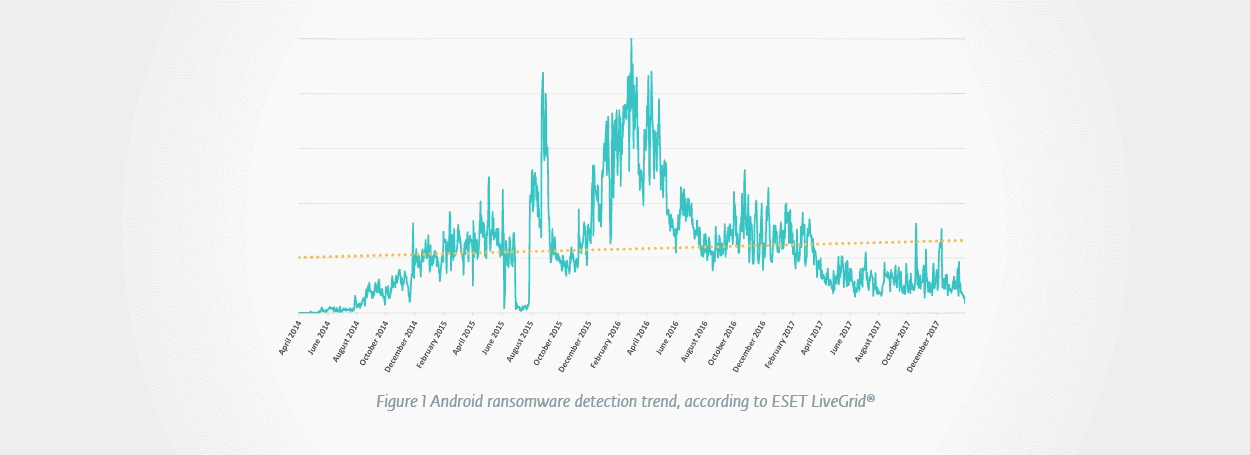DoubleLocker was 2017's most prominent new player
Overall, the Android ransomware scene has been the same in 2017 as in the previous year. Screen lockers (ransomware that shows a message over the screen preventing access to other apps), PIN lockers (ransomware that locks the screen with a special PIN), and crypto-ransomware (that encrypts files) have continued to make victims, with very few "technical innovations."
While old players like the Charger, Lockerpin, and Simplelocker families have continued to wreak havoc, especially on the Chinese market, ESET has also seen new strains.
The most important has been
the DoubleLocker family, a new ransomware strain spotted last October. DoubleLocker sealed its place in the history of Android malware by becoming the first Android ransomware strain that (ab)used the Accessibility service to gain admin rights and infect users.

